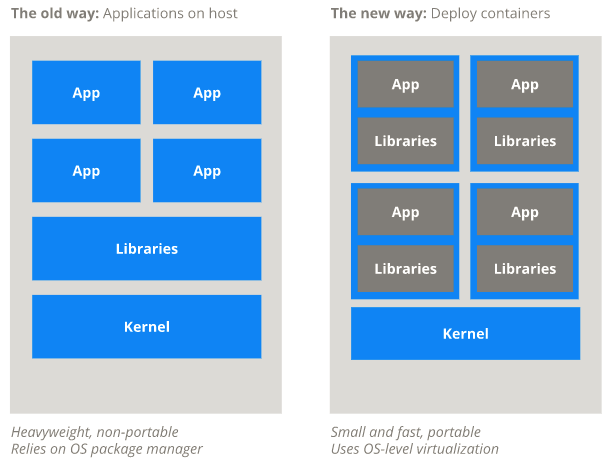
Why You Should be Using Containers
A Linux container is a set of processes that are isolated from the rest of the system, running from a distinct image that provides all files necessary to support the processes. By providing an image that contains all of the application’s dependencies, it is portable and consistent as it moves from development to testing, and finally to production.
Some of the main business drivers and strategic reasons for using containers are:
- Easily run and accommodate legacy applications.
- Achieve higher density and utilization of resources in the datacenter.
- Adoption of new technologies is accelerated, put in isolated secure containers.
- Enhanced accessibility as a code is quickly and easily streamlined to customers.
The Traditional Way to Deploy Applications:
- Applications were installed on a host using the operating system package manager.
- This had the disadvantage of entangling each application’s executables, configuration, libraries and lifecycles with each other and with the host OS.
- One could build immutable virtual machine (VM) images to achieve predictable rollouts and rollbacks, but VMs are heavyweight and non-portable.
The Modern Way to Deploy Applications:
Containers are deployed based on operating system-level virtualization rather than hardware virtualization.
- These containers are isolated from each other and from the host. They have their own filesystems, they can’t see each other’s’ processes and their computational resource usage can be bounded.
- They are easier to build than VMs, and because they are decoupled from the underlying infrastructure and from the host filesystem, they are portable across clouds and OS distributions.
Benefits of Containers:
- Agile application creation and deployment: Increased ease and efficiency of container image creation compared to a VM image.
- Continuous development, integration, and deployment: Enables reliable and frequent container image build and deployment with quick and easy rollbacks (due to image immutability).
- Dev and Ops separation of concerns: Create application container images at build/release time rather than deployment time, thereby decoupling applications from infrastructure.
- Environmental consistency across development, testing, and production: Runs the same on a laptop as it does in the cloud.
- Cloud and OS distribution portability: Runs on Ubuntu, on-premises, Google Container Engine and anywhere else.
- Application-centric management: Raises the level of abstraction from running an OS on virtual hardware to running an application on an OS using logical resources.
- Loosely coupled, distributed, elastic, liberated micro-services: Applications are broken into smaller, independent pieces and can be deployed and managed dynamically—not a fat monolithic stack running on one large, single-purpose machine.
- Resource isolation: Predictable application performance.
- Resource utilization: High efficiency and density.
For more details and information on containers for your business, Contact SNP.




